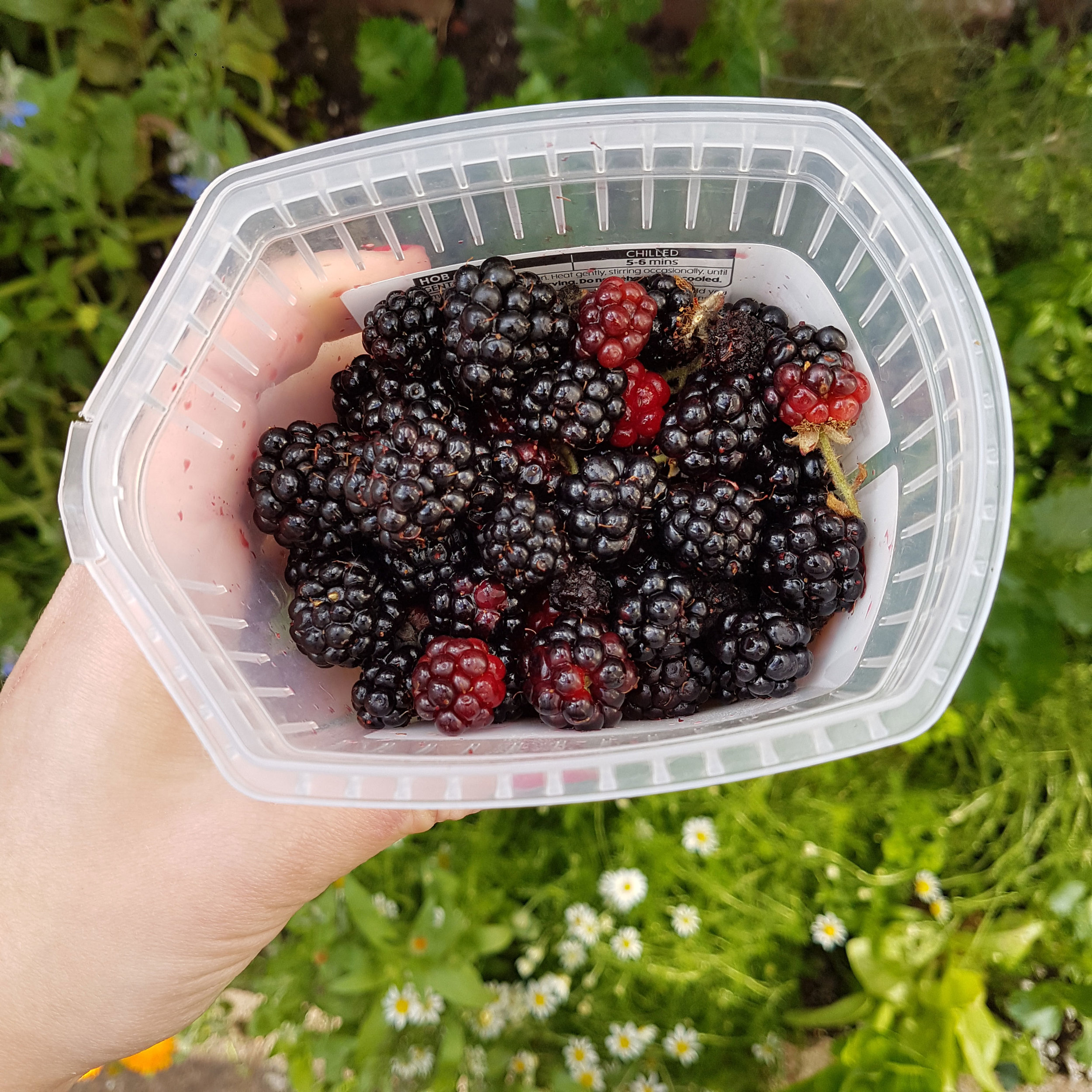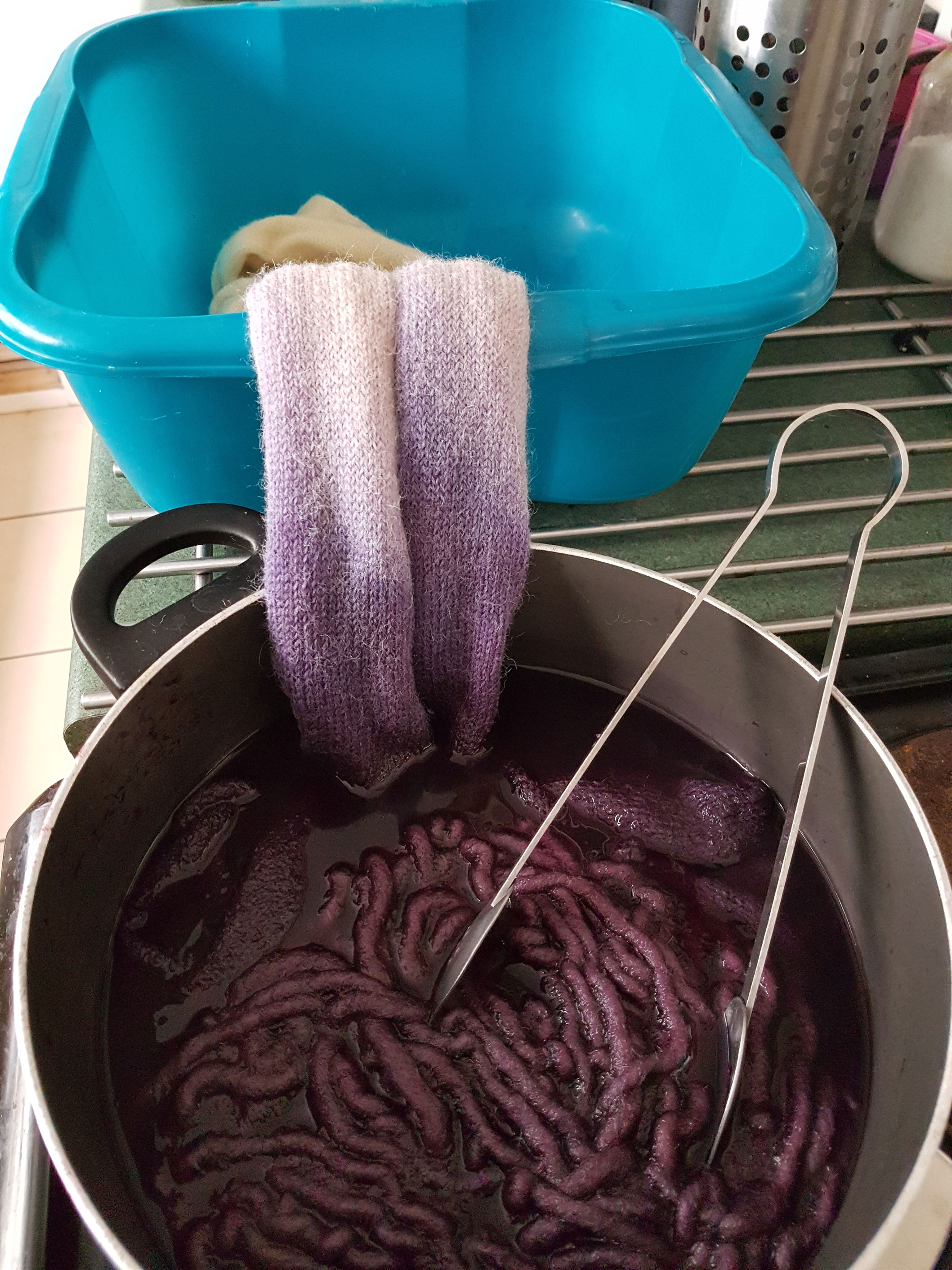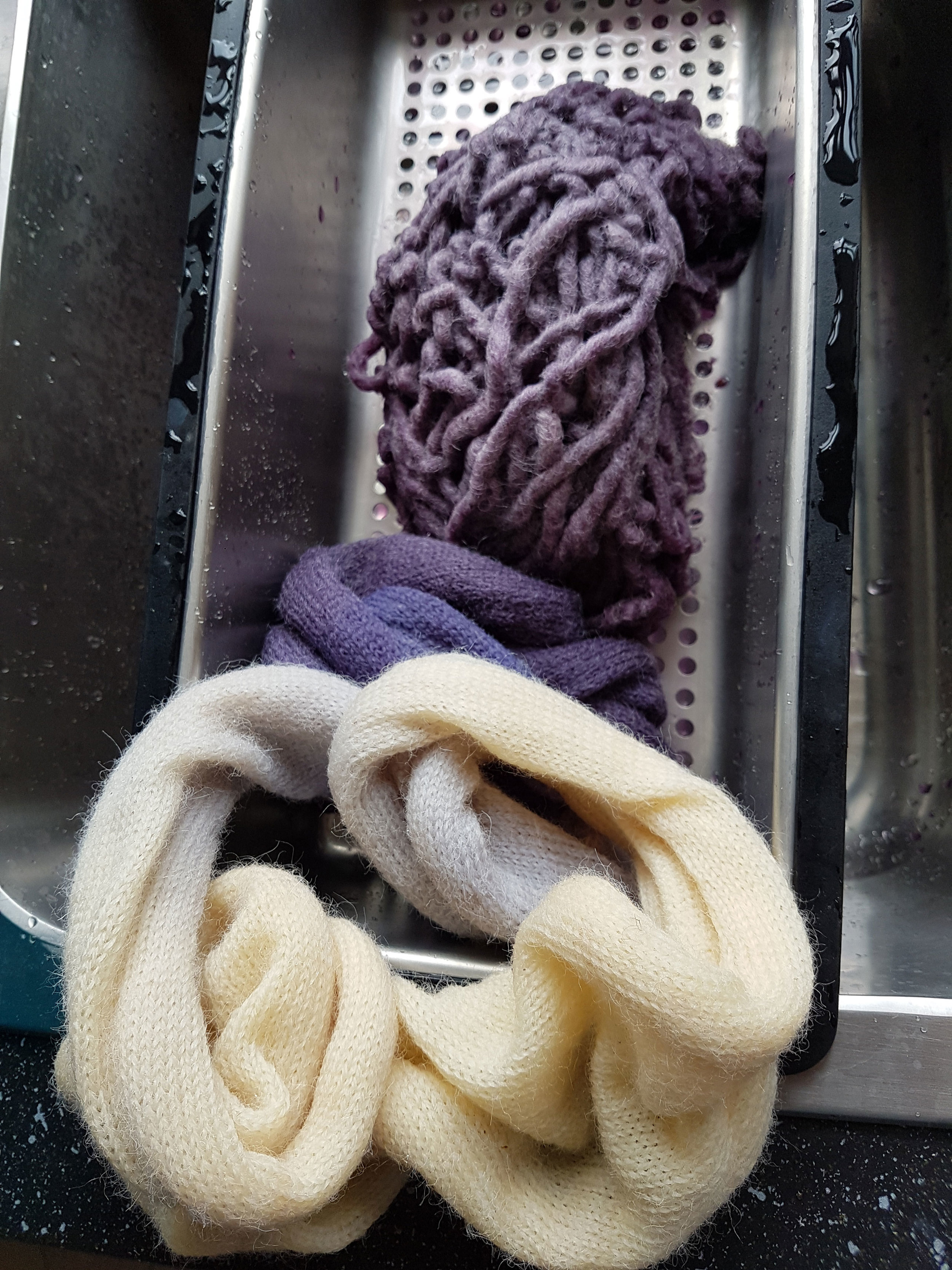Bramble bounty - dyeing with foraged blackberries
Note before reading: This blog was written in 2017, when I was studying for my MA (hence the Harvard referencing!). Where needed, I have edited these posts to correct any factual inaccuracies. This post was last edited Jan 2025.
Blackberries are a fugitive dye meaning that the colour will fade and wash out to grey over time. For a more stable purple dye, consider logwood.
My old workplace (an artists studio on a light industrial estate), had an abundance of brambles this summer. As they are situated next to several grimy car garages, they didn't seem too appetising as a foodstuff, and after a quick curious Google I discovered they could be used as a dyestuff, so I picked several containers full to freeze and use later. A 2005 blog mentions that it is not a particularly colour fast material, and so I will use a mordant to help the dye adhere to the fabric.
I had an idea in my head to create an ombre, or dip-dye effect with the blackberry dye, so I knitted a scarf in ecru British wool. I scoured and mordanted it with alum as per Kristine Vejar's method in The Modern Natural Dyer (p58), including a skein of bulky wool yarn to see how that would react with the dye.
The berries were mixed with water and brought to a simmer in a pan, creating a sludgy purple liquor. I cooked the liquid for 45 minutes and left to cool before being strained. Then the yarn, scarf and liquid were heated together in the dye pot. To create the ombre effect I laid both ends of the scarf in the dyepot and kept the rest outside.
The results appeared before my eyes and you could see the purple liquid being absorbed into the knitted fabric! I simmered for an hour, turning the skein of yarn every 15 minutes. After cooling, rinsing, washing in PH neutral soap, the resulting scarf looked like this:
Burns, R. (2017) Blackberry Dye 4. (Own Collection)
It will be interesting to see how the colour changes and wears over time. (2020 edit - I have since realised that berry-based dyes are fairly fugitive, and will fade to grey over time.) 2025 edit - the colour of the yarn dyed in this post is now a very pale grey! Blackberries fall into the fugitive category of dyes, meaning they will fade and wash out over time, regardless of your mordanting process.
The skein of yarn had taken on a pale grey hue, with a slight hint of purple. Grey has formed a key part of my colour palette in my current creative practice (thanks to my obsession with concrete), and so perhaps blackberries are a good material to use for this.
References:
Burns, R. (2017) Blackberry Dye 1-4. (Own Collection)
Tahlia. (2005) Natural Dyes: Blackberry. [Online]. Available from: http://www.tahlia.org/blogger/postpics/dye/blackberrydye.htm (Accessed 27 October 2017)
Vejar, K. (2015) The Modern Natural Dyer. Abrams: New York.




